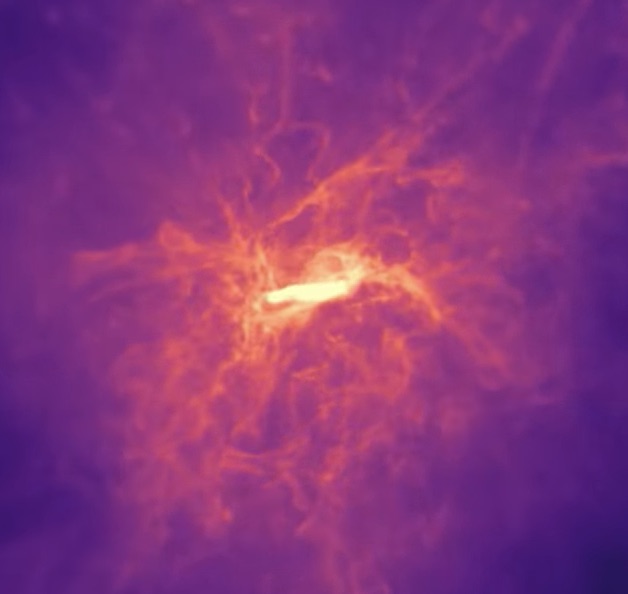 In this video from the IllustrusTNG team, a state-of-the-art simulation called TNG50 will allow researchers to study how the cosmos evolved in both detail and a large scale.
In this video from the IllustrusTNG team, a state-of-the-art simulation called TNG50 will allow researchers to study how the cosmos evolved in both detail and a large scale.
The formation of a single massive galaxy through time, from early cosmic epochs until the present day, in the TNG50 cosmic simulation. The main panel shows the density of the cosmic gas (high in white, low in black). Insets show large-scale dark matter and then gas (lower left), and small-scale stellar and gaseous distributions (lower right). This TNG50 galaxy will be similar in mass and shape to Andromeda (M31) by the time the movie reaches the current epoch. Its progenitor experiences rapid star formation in a turbulent gas reservoir which settles into an ordered disc after a couple of billion years of cosmic evolution. A rather quiet late time assembly history without major mergers allows the galaxy to relax into an equilibrium balance of gas outflows from supernova explosions and gas accretion from its surroundings.
TNG50 is the latest simulation produced by IllustrisTNG, an ongoing series of large, cosmological magnetohydrodynamical simulations of galaxy formation. TNG aims to illuminate the physical processes that drive galaxy formation: to understand when and how galaxies evolve into the structures that are observed in the night sky, and to make predictions for current and future observational programs. The simulations use a state of the art numerical code which includes a comprehensive physical model and runs on some of the largest supercomputers in the world. TNG is a successor to the original Illustris simulation and builds on several years of effort by many people. The project description page contains an introduction to the motivations, techniques, and early science results of the TNG simulations. Presently, the project includes three primary runs spanning a range of volume and resolution; these are called TNG50, TNG100, and TNG300.
This simulation was made possible by the Hazel Hen supercomputer in Stuttgart, where 16,000 cores worked together for more than a year – the longest and most resource-intensive simulation to date. The simulation itself consists of a cube of space measuring more than 230 million light-years in diameter that contains more than 20 billion particles representing dark matter, stars, cosmic gas, magnetic fields, and supermassive black holes (SMBHs).




